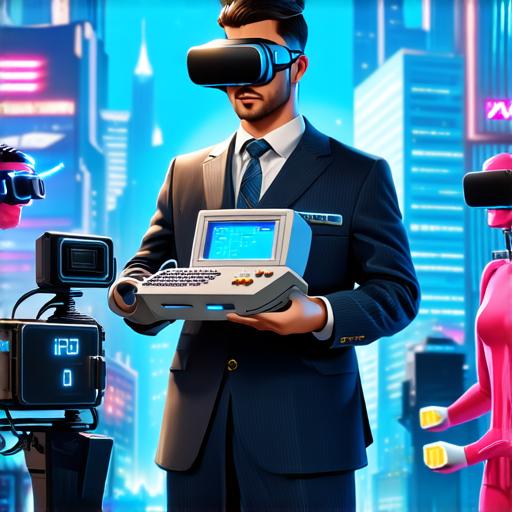I. Introduction
The term “virtual reality” was first coined in 1968 by Jaron Lanier, an American computer scientist and author. However, the concept of creating immersive experiences using technology dates back much further. In this article, we will explore the history of virtual reality technology and its evolution over time.
II. Early Developments
The early developments in virtual reality technology can be traced back to the 1960s when researchers at MIT began experimenting with head-mounted displays (HMDs). These early HMDs were bulky and difficult to use, but they laid the foundation for modern VR technology. In the 1970s, researchers at Sword of Damocles, a company founded by Ivan Sutherland, developed the first computer graphics program, Sketchpad. This program allowed users to create 3D models and manipulate them in a virtual environment.
III. The Birth of Virtual Worlds
In the early 1980s, researchers at the University of Illinois developed the first virtual reality system, called the “Cave”. This system used mirrors and projectors to create a 360-degree immersive experience. In the late 1980s, VR systems began to incorporate motion tracking technology, allowing users to move around in the virtual world.
The first commercial VR system, called the “Virtual Reality Theater”, was developed by the California-based company, Virtual Reality Systems (VRS). The VR Theater used head-mounted displays and motion trackers to create a fully immersive experience for users. In 1992, Sega released the first home VR system, called the “Sega Genesis 3D”. This system used a head-mounted display and motion tracking technology to provide users with a fully immersive gaming experience.
IV. The Rise of Virtual Reality in Gaming
The rise of virtual reality in gaming can be traced back to the late 1990s when developers began exploring the potential of VR for gaming applications. In 1998, Nintendo released the “N64”, a video game console that included a built-in 3D analog stick, allowing users to control games in a fully immersive 3D environment.
In the early 2000s, VR gaming technology began to advance rapidly. In 2001, Sony released the “EyeToy”, a motion-controlled game accessory for the PlayStation 2. The EyeToy used infrared sensors and cameras to track the movements of users, allowing them to interact with virtual objects in the game world.
In 2004, Valve Corporation released the “Half-Life 2”, a popular first-person shooter game that included a built-in VR mode. The VR mode used motion tracking technology and head-mounted displays to provide users with a fully immersive gaming experience.
V. Virtual Reality in Other Industries
Virtual reality technology has also found applications in other industries beyond gaming. In the 2010s, VR began to gain traction in healthcare and education. For example, virtual reality simulations can be used to train medical students to perform complex procedures in a safe and controlled environment. Virtual reality can also be used to create immersive educational experiences that engage students and enhance their learning.
Virtual reality technology has also found applications in the fields of architecture, engineering, and design. Architects and engineers can use virtual reality simulations to visualize and test designs before they are built, saving time and resources. Similarly, designers can use virtual reality to create immersive product demonstrations and prototypes.
VI. The Future of Virtual Reality Technology
The future of virtual reality technology is bright, with advancements in hardware and software continuing to drive innovation. One area of particular interest is the development of wireless VR systems that do not require users to be tethered to a computer or console. This will allow for more freedom of movement and greater immersion in the virtual world.
Another area of focus is the development of haptic technology, which allows users to feel physical sensations in the virtual world. Haptic technology could be used to provide users with a more realistic and immersive experience, making it possible to interact with virtual objects in ways that were previously impossible.
VII. Conclusion
The origin of virtual reality technology can be traced back to the pioneers who dreamt of immersive experiences that could transport people to different worlds. From its humble beginnings, virtual reality technology has evolved rapidly, finding applications in gaming, healthcare, education, architecture, engineering, and design. The future of virtual reality technology is bright, with advancements in hardware and software continuing to drive innovation. As we look to the future, it is clear that virtual reality will continue to be a powerful tool for creating immersive experiences that enhance our lives in countless ways.

